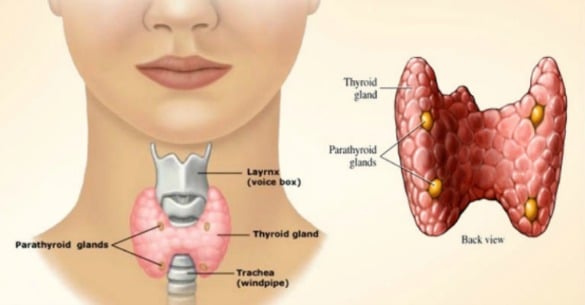In this article
What if there was a pill guaranteed to help with speeding up your metabolism, with no side effects? It would sell like gangbusters.
That’s because most of us know that a faster metabolism means: 1) we’ll burn more fat; and/or 2) we get to eat more without worrying about gaining weight.
Those reasons are both big-time motivators to do what we can to increase our metabolisms. But the real truth is that popping a pill can be dangerous – and most of the time it doesn’t work.
Before we get into effective ways to speed up your metabolism, let’s discuss what metabolism really is.
How Many Calories You Burn
When we talk about metabolism, we’re essentially referring to your basal metabolic rate (BMR). This rate at which you burn calories while you’re at rest, and it accounts for 60 to 75 percent of your total calorie burn per day.
Very few things will budge this rate. Basically, it boils down to this:
This is also why metabolism supplements and pills are mostly ineffective. They don’t offer lasting change to any of these variables, so at best you’re getting a small boost in a tiny window of time.
On the other hand, there are natural ways of speeding up our metabolism that tweak these variables to increase your metabolism each and every day, all day.
That’s much better than the small, questionable changes a pill offers, right?
Read on to discover how to fire up your metabolism furnace naturally, starting in as little as 30 minutes.
Speeding Up Your Metabolism: 5 Ways
1. Strength Training
Strength training is an absolute, no-questions-asked requirement for boosting your metabolism.
This is because (and I know you’ve heard this before) muscle burns more calories at rest than anything else. But that’s not all.
Building lean muscle through strength training also boosts levels of testosterone and growth hormone – hormones that play a vital role in sustaining lean muscle mass and a healthy metabolism.
The results of boosting these hormones and adding muscle to your frame are quite astonishing. In fact, one study reported a 4.2 percent elevation in metabolism after high-intensity resistance workouts, resulting in “significantly elevated” fat oxidation over a 16-hour period (1).
In addition to increasing metabolism just by building muscle, resistance training has another trick up its sleeve. It also boosts metabolism through a process called excess post-exercise oxygen consumption or EPOC.
EPOC, or as I like to call it, “afterburn,” essentially refers to the amount of calories you burning after a workout, rather than during.
You see, many people think they can only burn more calories during a workout while their heart rate is up.
How to Burn More Calories Post-Workout
Strength training throws this myth out the window. In reality, after you strength train at a high intensity, your body works harder to restore your oxygen levels back to normal and clear out excess lactic acid (not to mention repair your muscles) – all of which require extra calories.
I know what you’re thinking: “Oh come on, afterburn can’t make that much of a difference though, right?”
Well, according to a study published in the European Journal of Applied Physiology, a 30-minute compound exercise workout that include four circuits of bench press, power cleans, and squats elevated participants’ metabolisms for an astounding 48 hours following the workout (2)!
That’s an elevation of metabolism for two days following one 30-minute workout!
So, to put it simply, EPOC is awesome. I mean, who doesn’t want to burn loads of extra calories for days after a workout?
The key to getting these effects lies in intensity. You can’t lift barely-there weights for 30 minutes a day and expect returns in regard to metabolism. You have to push the envelope.
Of course, this envelope is different for everyone, depending on if they’re a beginner or a seasoned athlete. This is why I recommend strength training that requires a weight that is a challenge for you to achieve 6 to 8 reps only.
This will ensure that you’re getting the level of intensity needed to boost your metabolic rate and build lean muscle.
Check out These Resources:
- The Ultimate Guide to the Best Compound Dumbbell Exercises
- The 7 Best Fat Burning Leg Exercises
- The Correct Squat Form (And the Best Squat Variations to Do)
2. Early Morning Exercise
The start of the day is a prime time to boost your metabolism for at least the next few hours.
After all, remember how we saw that strength training boosted individual’s metabolisms for up to 48 hours following a workout?
My line of reasoning is this: why wait to cash in on these effects? The sooner you workout, the quicker your body gets to work on elevating your metabolism for the day.
Even if you’re unable to get in an intense strength training session first thing in the morning, try going for a walk with a weighted vest or taking multiple stairs on your way to work. This will give your body the signal to increase your metabolism to “keep up with you” and your extra movement.
3. High-Intensity Interval Training (HIIT)
HIIT training is another fantastic metabolic booster.
HIIT is essentially a training regimen that focuses on alternating periods of high-intensity exercise with periods of low intensity exercise. This style of training has been proved to be superior for fat loss than any other style of training.
And the best part? It gets you in and out of the gym faster (like 30 minutes or less) and with an increased metabolism.
This is because, like strength training, HIIT workouts also increase growth hormone levels, which aids in building muscle mass and, subsequently, the increased metabolic effects seen when we build muscle. Plus, it also encourages catecholamine (adrenaline, norepinephrine) release, which increases fatty acid mobilization (3).
Not to mention, HIIT also increases EPOC (the “afterburn effect” I mentioned above). For instance, one study found that, compared to a group doing aerobics, the HIIT group burned 900 percent more fat over the 15 weeks than the first group burned in 20 weeks (4).
This speaks to HIIT’s power in increasing metabolism.
Another reason (do we really need more?) HIIT is such a powerful metabolic booster is because it actually produces an immediate change in DNA.
These structural changes from HIIT cause an increase in the production of fat-burning proteins, which then leads to your body become more efficient at using fat as a fuel source (5).
While this may not result in a direct metabolic increase, any time you’re increasing your body’s ability to do something efficiently, you’re setting yourself up for a healthy metabolism.
Check out These Resources:
- Interval Training for Beginners: How to Get Started
- 10 Cool New Ways to Use Tabata Training for Faster Fat Loss
- 5 Powerful Jump Rope HIIT Workouts (#2 Is My Favorite)
4. Static Contractions
Do you spend a lot of time sitting during the day for work? If you do, try something with me.
For 10 to 20 seconds, concentrate on contracting every single muscle in your body while you’re sitting. You might shake a little.
Now, relax. So what just happened?
You might have noticed your body temperature rose just a bit. This is an indicator that your metabolism has kicked in to account for increased muscle use. While it’s not as powerful as intense strength training, it still engages your muscles and therefore affects your metabolism.
It might not seem like much, but doing this a few times an hour at work will have an impact on your metabolism. Combine it with getting up every 20 minutes or so and walking around, and you have a powerful way of telling your body it needs to speed things up to keep up with your increased movement.
5. Optimizing Thyroid Function
Lastly, it’s so important to optimize your thyroid before any of these metabolism-boosting techniques will have any effect.
This is because your thyroid is king when it comes to deciding your metabolic rate. If it receives any signal that something is off (such as through low calorie dieting, toxic food or metals, stress, etc.) it will immediately slow down your metabolic rate to conserve energy to prepare you to face a “threatening situation.”
Now, while dieting might not seem “threatening” to you, your body doesn’t know the difference between “dieting” and “famine-related food shortage.” It also doesn’t care for stress (which signals a threat) or toxic substances (another threat).
This is why it’s so important to, firstly, get stress levels under control and secondly, avoid lowering your calories too much.
Other ways you can support your thyroid are by eating iodine-rich foods like kelp and seaweeds, and selenium-rich foods like brazil nuts (you only need 1 or 2 per day). Both of these minerals play important roles in overall thyroid function, and western diets are commonly deficient in them.
Also, try to focus on eating only whole foods from nature, while also helping your gut health by eating fermented foods like sauerkraut and kimchi, or by taking a probiotic.
Another thing to note that you might be wondering: claims that “eating five small meals per day will boost your metabolism” are mainly myth (read more about why here).
The truth is, it doesn’t matter if you eat one large meal a day or six; the body responds to overall calories, muscle mass, movement, and a healthy thyroid when it comes to speeding up metabolism.
Work With Your Body, Not Against It
I’m a huge fan of natural. It’s what I love most about this list. It doesn’t involve dangerous fat-burning pills, laxatives, or ten cups of coffee per day to increase your metabolic rate.
Integrate these five strategies into your daily routine and you’ll be sure to keep your metabolism firing and your body happy.
FREE Fat-Burning Workout
Ready to put the power of your metabolism to work? Try the Fat Blaster Workout!
This workout combines strength and cardio intervals to focus on revving your body’s fat-burning machine while also sculpting muscles.
It includes an instructional video, workout tracker, and follow-along audio. A $29 value – it’s yours FREE!
Just click the banner below to download the workout now!






